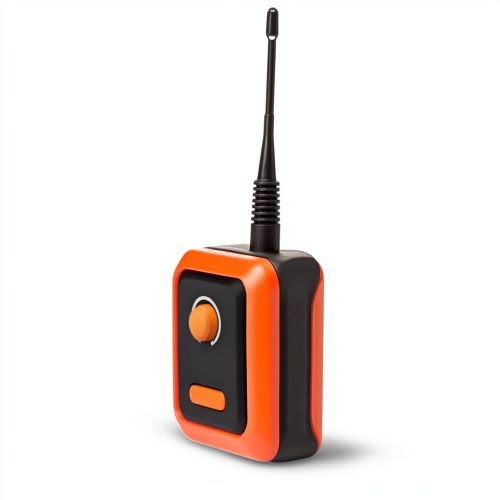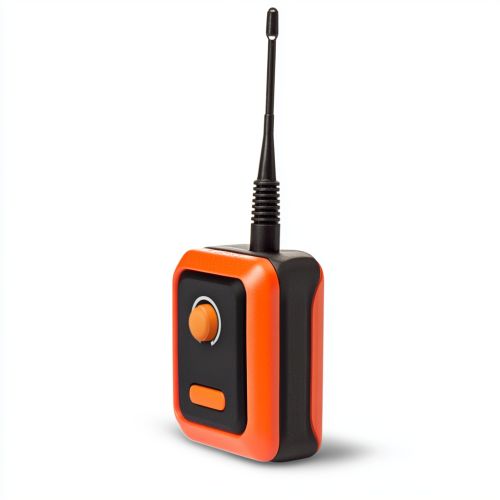Personal Locator Beacon: Difference between revisions
(Created page with "== Introduction == A '''Personal Locator Beacon''' (PLB) is a portable emergency device that transmits a distress signal to a network of satellites, which then relay the signal to appropriate search and rescue (SAR) organizations. PLBs are crucial tools for individuals engaging in activities in remote or hazardous environments, such as hiking, boating, or flying, where conventional communication methods may not be available. == History == The development of PLBs can be...") |
No edit summary |
||
| Line 14: | Line 14: | ||
PLBs are designed to be easy to activate in an emergency. Most devices have a simple switch or button that, when pressed, initiates the distress signal. It is crucial for users to register their PLB with the appropriate authorities, providing personal information and details about their planned activities. This registration information can significantly aid SAR teams in their response efforts. | PLBs are designed to be easy to activate in an emergency. Most devices have a simple switch or button that, when pressed, initiates the distress signal. It is crucial for users to register their PLB with the appropriate authorities, providing personal information and details about their planned activities. This registration information can significantly aid SAR teams in their response efforts. | ||
[[Image:Detail-97749.jpg|thumb|center|A compact personal locator beacon with a visible activation button and antenna.|class=only_on_mobile]] | |||
[[Image:Detail-97750.jpg|thumb|center|A compact personal locator beacon with a visible activation button and antenna.|class=only_on_desktop]] | |||
== Legal and Regulatory Aspects == | == Legal and Regulatory Aspects == | ||
Latest revision as of 12:43, 30 August 2024
Introduction
A Personal Locator Beacon (PLB) is a portable emergency device that transmits a distress signal to a network of satellites, which then relay the signal to appropriate search and rescue (SAR) organizations. PLBs are crucial tools for individuals engaging in activities in remote or hazardous environments, such as hiking, boating, or flying, where conventional communication methods may not be available.
History
The development of PLBs can be traced back to the need for reliable emergency communication systems in remote areas. The concept originated from military and aviation sectors, where the need for quick and accurate distress signaling was paramount. The first PLBs were large and cumbersome, but advancements in technology have made them more compact and user-friendly.
Technology and Functionality
PLBs operate on the Cospas-Sarsat satellite system, which is an international satellite-based search and rescue system. The system uses a combination of low-Earth orbit (LEO) and geostationary (GEO) satellites to detect and locate distress signals from PLBs.
Signal Transmission
When activated, a PLB transmits a distress signal on the 406 MHz frequency, which is monitored by the Cospas-Sarsat satellites. The signal contains a unique identifier code that helps SAR teams identify the beacon and the registered user. Additionally, many modern PLBs are equipped with a GPS receiver, which provides precise location coordinates.
Activation and Use
PLBs are designed to be easy to activate in an emergency. Most devices have a simple switch or button that, when pressed, initiates the distress signal. It is crucial for users to register their PLB with the appropriate authorities, providing personal information and details about their planned activities. This registration information can significantly aid SAR teams in their response efforts.


Legal and Regulatory Aspects
The use and regulation of PLBs vary by country. In the United States, the Federal Communications Commission (FCC) and the National Oceanic and Atmospheric Administration (NOAA) oversee the use of PLBs. Users are required to register their devices with NOAA, and there are strict penalties for false activations.
Applications
PLBs are used in a variety of scenarios, including:
Outdoor Recreation
Hikers, climbers, and adventurers often carry PLBs as a safety measure when venturing into remote or rugged terrain. The ability to quickly signal for help can be life-saving in the event of an accident or medical emergency.
Maritime Use
Boaters and sailors use PLBs as part of their emergency preparedness equipment. In the event of a vessel sinking or other maritime emergency, a PLB can provide a critical lifeline to SAR services.
Aviation
Pilots and aircrew carry PLBs to ensure they can signal for help in the event of a crash or forced landing in remote areas. PLBs are often part of the standard emergency equipment on small aircraft.
Advantages and Limitations
Advantages
- **Reliability**: PLBs provide a reliable means of signaling for help, even in areas without cell phone coverage. - **Accuracy**: With GPS-enabled PLBs, the location of the distress signal can be pinpointed with high accuracy. - **Global Coverage**: The Cospas-Sarsat system provides global coverage, ensuring that distress signals can be detected anywhere in the world.
Limitations
- **Cost**: PLBs can be expensive, which may be a barrier for some users. - **False Activations**: Accidental activations can divert SAR resources and incur penalties. - **Battery Life**: PLBs have a finite battery life, and users must ensure their device is properly maintained and charged.
Future Developments
The technology behind PLBs continues to evolve, with ongoing improvements in battery life, signal accuracy, and device durability. Future advancements may include integration with other communication technologies, such as satellite phones, to provide more comprehensive emergency communication solutions.
